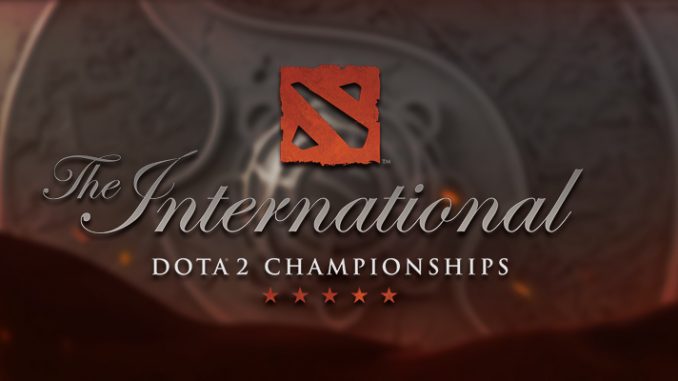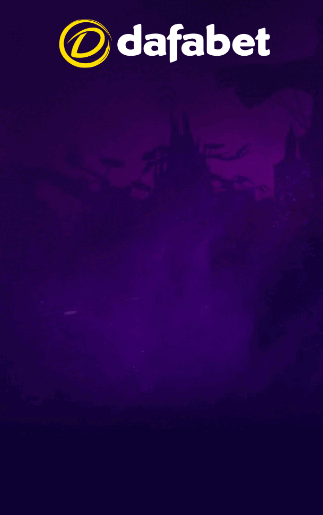
A brief history of The International
The International is a phenomenon in esports and a special event for every Dota 2 fan. It is the most hyped and anticipated event for two main reasons – it offers the largest prize pool in esports and only the very best Dota 2 teams participate. With TI 6 only a month away, here is a short recap of previous Internationals.
The International 1 – History in the making and Na’Vi
It all started in Cologne in 2011 during GamesCom where game developers Valve organized the first tournament in an attempt to bring Dota 2 to the wider gaming public. Expectations for the prize pool were around the $50,000 mark and no one could quite believe it when the jaw-dropping $1.6million pool was announced. Sixteen teams were invited to compete for the largest esports prize in history and it soon became apparent that Dota 2 was here to stay.
The first International belonged to CIS side Natus Vincere. Dominating throughout the tournament, Na’Vi made it to the Finals without dropping a single game. In the deciding clash, they faced Chinese side EHOME and enjoyed a one game advantage before they even started as they were the team that reached the Finals through the Winners’ Bracket.
Undoubtedly, the star player in their ranks was Dendi, who made a big impact in the Finals. Toby “Tobi Wan” Dawson’s “DENDI BLACK HOLE!!!” in the second game still resonates in the memory of many fans as the epitome of Na’Vi’s domination that year. Na’Vi dropped just one game on their way to becoming the first pro gamer millionaires and their spectacular playstyle quickly made them into one of the most beloved Dota 2 teams to date.
The International 2 – Chinese Dominance
The second edition followed roughly a year later, but this time the venue was Benaroya Hall in Seattle, Washington. The format of 16 participating teams and the prize pool of $1.6million was retained, but there were two groups with eight teams each as opposed to the four groups of four in TI 1. The tournament was revised to include two qualified teams from two major regions – East and West – and the one game advantage awarded to the Winners’ Bracket finalist was dropped. Due to all this, this edition offered an even more epic display of Dota mastery.
Na’Vi were defending champions and still one of the strongest teams out there. However, 2012 was the year of the Chinese sides as DK, iG and LGD dominated the two groups, with LGD securing a perfect score of 14-0. Despite a less-than-promising 8-6 record, Na’Vi managed to reach the Grand Finals through the Winners’ Bracket, knocking the impressive trio into the Losers’ Bracket on the way. In a tournament dominated by the team fight meta, Na’Vi received standing ovations for their spectacular wombo combos against iG and TongFu in particular.
Eventually, DK, iG and LGD had to clash with each other for the second spot in the Grand Finals through the Losers’ Bracket and iG emerged as the worthiest of the three. Na’Vi had already eliminated iG from the Winners’ Bracket, but iG had defeated them in the Group Stage so the Finals were hard to call. In the end, the Chinese contenders managed to prevail with a 3-1 scoreline to assert China as the Dota 2 powerhouse for the time being.
The International 3 – The triumph of the split push and “The million-dollar Dream Coil”
The International kept growing and the third edition brought about several changes, the most important of which was the crowdfunding addition. Valve released in-game compendiums that were priced at $9.99 and 25% of each sale would go directly into the prize pool. This saw it increase to $2,874,381. The format this year had 13 invitees and added a qualification round divided into two regions – East and West – as well as a Wildcard spot.
The Grand Finals of TI 3 remain strong in the memory of Dota 2 fans as it was the most tightly-contested and climactic Finals to date. The championship was settled in a five game thriller. On one side, it featured the first International champions and previous year’s finalists – Na’Vi – and on the other, the newly established Swedish powerhouse Alliance, who had dropped just one game prior to the Grand Finals. The Swedes were truly a phenomenon in TI 3, stomping over everyone in their path on their way to the Finals through unorthodox picks and hero combinations.
Fans could not ask for anything more from the deciding clashes. Na’Vi lost the first game, but managed to take the next two before Alliance made it 2-2. This meant the Aegis bearer was to be decided in a final game. Both teams wanted the win and the game was hotly contested, but Alliance managed to outmaneuver Na’Vi by using split-pushing and focusing on destroying their base rather than engaging in team fights. s4’s Dream Coils gave the edge to Alliance in critical moments of the game and in the final seconds Na’Vi were left hopelessly watching their Ancient getting leveled to the ground by the Swedes before calling gg.
The International 4 – Chinese Dominance v2.0
TI 4 was once again held in Seattle, Washington. This year’s edition saw a huge leap in the prize pool as the addition from the compendium buys increased it to $10,930,698. Teams now qualified from four regions – China, Europe, North America and Southeast Asia. Unlike the previous two years, all of the 16 teams were placed in one group and played a round-robin format, with the bottom six eliminated from the event. In the end, the top four contained three Chinese teams – Vici Gaming, Team DK and iG – while the reigning champions Alliance found themselves 12th and were thus eliminated in the Group Stage with a 6-9 record.
The tournament underwent a meta set mostly by the Chinese teams, which shaped the bouts around early game pushing and team fight orientated heroes. This proved successful for them, as four out of the top six teams overall were from China.
The surprise of the tournament however was Newbee, who fought their way to the Grand Finals having played the most games in the tournament. The other finalist was Vici Gaming, who had topped the Group Stage.
In an encounter that lacked the excitement and closeness of previous Finals, Newbee won convincingly against their compatriots with a 3-1 scoreline and raised the Aegis above their heads alongside receiving the $5,028,121 winners’ cheque.
Although nowhere near as spectacular as the previous year, The International 4 had its fair share of great moments including the introduction of Techies, as well as the cosplay event and the all-star match being particular treats for the fans.
The International 5 – Disillusionment and the Rise of NA Dota
Reaching The International became more competitive with TI 5 as the number of invitees was reduced to ten (from 11 the previous year). The number of qualifying teams was kept to four. Meanwhile, the number of wildcard spots was increased to four, but these teams had to compete for just two spots in the Group Stage of the main event before this began. The prize pool continued to grow and reached a staggering $18,429,613. The winnings distribution was also reformed as the winners’ cut of the pie was reduced to 36% from 46% so every participant would receive some remuneration, even the lowest-placed outfits.
Prior to the tournament, Team Secret were considered favourites to win. The superstar roster formed by Puppey at the beginning of 2015 was securing tournament after tournament in the months preceding the International. The Group Stage reverted back to two groups of eight teams and Team Secret did well, finishing second in their pool. Their players put in impressive individual displays, such as zai’s two solo kills against three enemies with Dark Seer, but the team’s performances in the bracket stage were lackluster and to everyone’s astonishment, Team Secret were eventually eliminated by Virtus.pro in the Lower Bracket.
Meanwhile, having finishing top of Group B, EG were gaining momentum with every win and it was no surprise that they managed to reach the Grand Finals, where an unlikely opponent was waiting – CDEC Gaming. The two teams had faced one another twice prior to the Grand Finals and the score was tied. EG and CDEC engaged in a fierce battle, but the Chinese outfit could not match EG and they went down 3-1 overall. Although EG seemed in control, CDEC had a Roshan opening in the last game. In what became famous as a six-million dollar Echo Slam, UNiVeRsE pulverized CDEC’s dreams of a comeback and took the trophy for his team alongside the $6,634,661 top prize.









